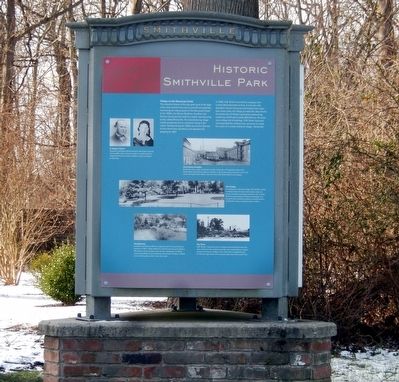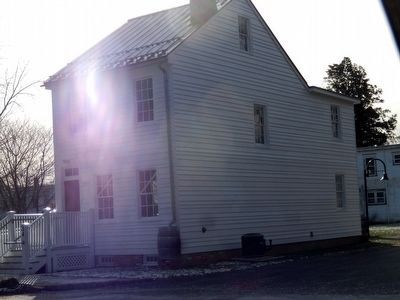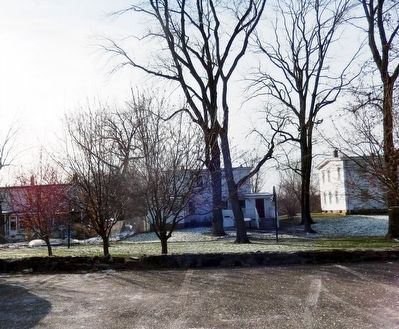Historic Smithville Park
Village on the Rancocas Creek
The industrial history of this site goes back to the days of the early colonists who set up sawmills and gristmills, harnessing the natural power of the Rancocas Creek. In the 1830s, the Shreve Brothers, Jonathan and Samuel, purchased the land for a textile manufacturing facility called Shreveville. The manufacturing village initially prospered, but an economic slump in the cotton industry during the 1850s forced the Shreves to shut down their operations and abandon the property by 1857.
In 1865, H.B. Smith removed his company from Lowell, Massachusetts to here. A rural site with abundant natural resources and located near major east coast cities, the village provided the ideal site for the production of Smith’s patented woodworking machinery. Smith paid a paltry $20,000 for 45 acres and a village full of buildings. H.B. Smith improved and expanded the existing town structure to create his vision of a model industrial village—“Smithville”.
(Inscription under the image on the upper left)
A Utopian Vision
Hezekiah and Agnes Smith arrived in Burlington County during 1865 with a vision to create a model industrial village that fostered worker welfare to gain increased productivity.
(Inscription under the image on the upper right)
The Factory
Complex
Smithville was a major production facility shipping to Philadelphia, New York, Washington and beyond. About a quarter of all woodworking machines sold in the nation during the late 1800s were from the H.B. Smith Machine Company.
(Inscription beside the image in the center)
The Village
In creating the industrial village, H.B. Smith invoked a strong sense of social and cultural values to create a healthy and happy workforce. As a result, Smithville possessed a distinct advantage over the grim and crowded conditions usually found in nineteen century industrial urban centers.
(Inscription under the image in the lower left)
The Mansion
Jonathan and Samuel Shreve originally built the Greek Revival mansion in 1841. Smith added to it extensively during his tenure. The interior of the mansion was no less impressive, as Smith continually added rooms including among other things, a billiard room, bowling alley, poker room and a bar.
(Inscription under the image in the lower right)
The Farm
H.B. Smith’s impressive farm complex stood directly across the main road from the mansion grounds and included barns, wagon sheds, tool houses, stables, corn cribs and a slaughterhouse. A 120-foot high tower with an observation deck also stood here.
Topics. This historical marker is listed in these topic lists: Industry & Commerce
Location. 39° 59.234′ N, 74° 45.055′ W. Marker is in Eastampton, New Jersey, in Burlington County. Marker is on Meade Lane. Touch for map. Marker is in this post office area: Mount Holly NJ 08060, United States of America. Touch for directions.
Other nearby markers. At least 8 other markers are within 2 miles of this marker, measured as the crow flies. An Industrial Village (about 400 feet away, measured in a direct line); Smithville Historic District (about 600 feet away); Smithville Lower Village (approx. 0.4 miles away); The Train Station & Smith’s Forest (approx. half a mile away); The Battle of Iron Works Hill (approx. 1.8 miles away); Battle of Ironworks Hill (approx. 1.8 miles away); Fire Company (approx. 1.8 miles away); History of Millstone Park (approx. 1.9 miles away). Touch for a list and map of all markers in Eastampton.
Credits. This page was last revised on June 16, 2016. It was originally submitted on February 3, 2016, by Don Morfe of Baltimore, Maryland. This page has been viewed 386 times since then and 19 times this year. Photos: 1, 2, 3. submitted on February 3, 2016, by Don Morfe of Baltimore, Maryland. • Bill Pfingsten was the editor who published this page.


